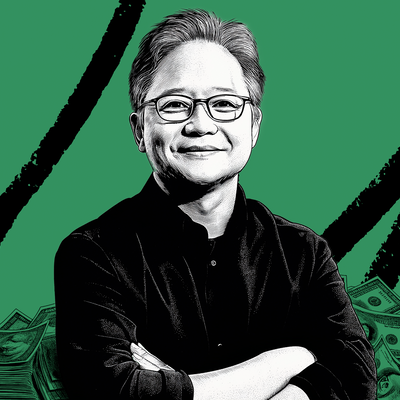
Before we get started, I wanted to let you know that I'm teaching a new cohort of my course, How to Write With AI. Take it from me: There is no higher ROI activity you can engage in than writing. If you make writing a serious practice, your career will flourish and your intellect will thrive. But writing is hard. Thankfully, AI tools like ChatGPT, Claude, Spiral, and Lex make it far easier to transform blank pages into powerful content. I will teach you how and show you my exact workflow for writing this column.
The four-week cohort-based class runs from Feb. 13 through Mar. 6 and includes:
- 4 live lectures and hands-on workshops
- A writing group overseen by an Every-trained editor
- Interviews with successful internet writers including Every CEO and cofounder Dan Shipper
- 30 days of quick writing exercises
- Your own, customized LLM prompt for improving your drafts
- A chance to share your writing with Every’s 90,000-plus readers
Over 90 students—including founders, aspiring writers, engineers, and professors—have already taken it. Check out the course website for more information and to enroll. Act quickly: There's a $300 early bird discount, and if you register by Jan. 23, you’ll jump ahead of the nearly 10,000-person waitlist for our new AI email tool Cora:
And now, on to my piece...
On Monday, tech is taking over Washington, D.C.
When he begins his second term in office, Donald Trump’s administration will be teeming with Silicon Valley personalities. Vice President-elect J.D. Vance is a Peter Thiel protégé. Sriram Krishnan, who’s been named a senior advisor for AI, is a former Andreessen Horowitz partner. David Sacks, the incoming White House AI and crypto czar, is an influential venture capitalist and All-In podcast host. And then there’s whatever Elon Musk is doing with DOGE, a new government efficiency commission.
The East and West Coast power centers seem to be merging more each day. Marc Andreessen himself is now recruiting for government positions, while others in the Thiel-ian orbit will occupy the positions of Deputy Secretary of Health and Human Services (Jim O’Neill), ambassador to Denmark (Ken Howery, who will presumably try to help Trump buy Greenland), and Under Secretary of State (Jacob Helberg). Surely more will join.
Reading this list may make you caw like a bald eagle and shoot a firework out of your window. Alternatively, it may make you spontaneously combust. What matters more than your opinion of these men is how they are positioned to affect policy in the United States and abroad. Regulation on crypto, open-source AI, energy policy—all of it seems up for revision during this administration. It’s safe to assume these Trump whisperers will influence tech regulation—or deregulation—directly.
While considering the looming eastward migration of tech luminaries, I found myself interested in a new book published by Stripe Press called Boom: Bubbles and the End of Stagnation by Byrne Hobart and Tobias Huber. (We’ll call them H&H.) Hobart (with whom I have co-written a piece) writes a popular business and tech newsletter and has an intellect that makes me feel dumb. Huber is an angel investor and a partner at a venture capital fund that I don’t know personally.
Their work examines how bubbles—which have a popular reputation for being stupid, wasteful, and harmful to investors—can actually accelerate technological progress. (We’ll get to this later, but they don’t exactly define bubbles.) The book ends with a section on how the “techno-scientific sublime…invokes a spiritual or religious experience of transcendence.” In other words, technology can be viewed as a form of religion. That’s all to say this book takes on the ambitious task of redefining an established economic phenomenon and writing a bible for progress at the same time.
Both Andreessen and Thiel blurbed it. Andreessen said that Boom “makes the case that humanity’s greatest risk is not climate change or misaligned superintelligent Al but not making enough progress.” Thiel said, “The dot-com bubble looked like the peak of delusion, but the truly deluded were those who wanted to indefinitely defer the future.” Shoot, even the book’s philosophical section is mostly couched in the frameworks of René Girard, Thiel’s favorite philosopher.
Boom acts as a handy guide to the ideological underpinning of this new fusion of political and technological power. It is an amalgamation of hyper-influential, relatively niche ideas that have been quietly driving much of the libertarian discourse around Silicon Valley for the last decade. By studying it, I hoped to gain some insight into what the next few years of tech influence in Washington may hold.
What is a bubble, anyhoo?
H&H’s argument can be compressed into three components:
- There has been economic, technological, and cultural stagnation since the early 1970s. The reasons are as varied as low male testosterone levels and the abandonment of the gold standard.
- Society can escape this stagnation through “speculative bubbles.” While some bubbles may have resulted in many people losing money, the underlying technological infrastructure built to accommodate the bubble ended up benefiting society in other ways.
- There are “messianic” properties to technology, which acts as a form of “salvation” for society. Because bubbles require a generous dollop of fervor and irrationality, this pseudo-spiritual belief in technology’s divine nature is a necessary component of bubbles and, by extension, progress in society.
It’s true that bubbles do sometimes produce useful outcomes. For instance, the dot-com bubble led to global fiber-optic cable deployment. However, in both the book and in the broader techno-utopian philosophy that it preaches, the details are underdeveloped.
Progress is a thin religion. Building technology for the betterment of humanity is more bumper-sticker philosophy than moral credence. Humanity is such a massive thing that it is easy to lose sight of the individuals who make up the blob of us. And in the absence of a grounded, personal philosophy—one maniacally focused on the individual—greed has an ugly way of rearing its head. (Witness the ravages of creative destruction, which too often is seen as a cost of making progress, rather than something to triage for the individuals harmed along the way.) My concern with these Thielien individuals in government isn’t even their goals. I strongly believe that we should build more, invent more, create more. But because the details of a progress philosophy are so vague, and so many of these players have financial stakes in the outcomes and thus real conflicts of interest, I worry that the accumulation of money and power looks like progress to them—and that can mean social stratification for everyone else.
Popping the bubble
One of the funnier things about this 270-page book on bubbles is that the authors never simply define them. They scope the word “bubble” to something broader, shiftier, more spiritual. To H&H, bubbles are not the concept that you learned about your undergraduate Introduction to Economics course, one in which assets inflate in value far beyond their intrinsic worth. Instead, bubbles act as “mechanisms for parallel innovation in emerging technologies.” They “channel our thymotic energies, ambitious visions, irrational exuberance, and economic desires toward the realization of a future that is radically different from the present.”
The authors provide six examples of bubbles: the Manhattan Project, the Apollo Program, Moore’s Law, the golden age of corporate R&D, fracking, and bitcoin. You’ll note how un-bubble-like these bubbles are. The Manhattan Project (which led to the atomic bomb) and the Apollo Program (which landed a man on the moon) were enormously expensive government projects. Their dissolution didn’t burst spectacularly and cost investors massive amounts of money.
Neither Moore’s Law—which explains the improvement in semiconductors over the last few decades—nor the “golden age of corporate R&D”—during which research labs like Xerox Parc invented the graphical user interface—resemble the classical economic definition of speculative bubbles. In fact, they represent multiple decades of sustained private sector innovation. There may be related bubbles, such as temporary run-ups in semiconductor stocks over the last 40 years, but I find their inclusion odd.
While both fracking and bitcoin are prone to the boom/bust cycles typical of bubble dynamics, only fracking has produced improvements that have been net-beneficial to society. Bitcoin and its crypto descendants have given little value relative to the overall capital put into the sector.
What unites all of these examples is a new definition of bubbles that H&H invent. Redefining a common word to elicit broader reader interest is a common tactic for writers of books such as this one. Let’s take H&H at face value and say that these are all bubbles as they define them. It is only on page 251 of 270 that they enumerate a list of bubble attributes. They are the following:
- Definite optimism and constrained vision: Bubbles are driven by big, bold plans for the future that inspire excitement and debate among both believers and skeptics.
- FOMO and YOLO dynamics: The fear of missing out and the sense that you only live once drive people to take bold risks and chase opportunities they see as once-in-a-lifetime.
- Excessive risk-taking and over-investment: Bubbles spark a rush of money and effort into risky ideas, creating breakthroughs that might not happen under cautious planning.
- Parallelization and coordination: Bubbles bring together people and resources to build interconnected pieces of a future vision that wouldn’t work without everyone contributing at the same time.
- Reflexivity and hyperstition: Bubbles feed on themselves, where belief in a vision helps make it real, creating a feedback loop that turns ideas into reality.
To determine if an “emergent technology” qualifies as a bubble, one simply has to see if it fulfills those requirements. However, by eschewing any financial metrics, the word “bubble” loses its analytical heft. You can contort this framework to fit many things. Relatively new religions like Mormonism have strong elements of FOMO (pick the wrong church, end up in Mormon hell with the other coffee drinkers), as do newer attractions like NFTs (pick the wrong picture of a monkey, end up in poverty—you know, secular American hell).
Instead, the authors defend their criteria by writing:
“Any domain of future transformative progress remains necessarily vague and under-defined, and the more granular and concrete the analysis becomes, the greater the risk of over-indexing on cases and examples that might turn out to be historically irrelevant…We will conclude by focusing on what is perhaps the most important driver of progress: the possession of a transcendent vision.” [Emphasis added]
If the most important driver of progress—and by extension good bubbles—is the possession of a transcendent vision, then Mormonism may actually be a great example. Instead, the authors differentiate a good bubble (like fracking) from a bad one (like Beanie Babies in the 1990s) on the basis of the underlying speculation. They write:
“An important differentiator is that participants in good bubbles tend to talk about the ways in which everyone’s behavior will be transformed in the future. In contrast, participants in bad bubbles often talk about how a new version of an existing product will be more widely available and slightly better than the previous one…Importantly, bad bubbles are usually not the result of wild speculation in nonsensical assets. It can seem this way because sometimes people do invest in nonsense and then lose out. But when such bubbles burst, only the investors get hurt… Instead, the categories of activity prone to bad bubbles that result in the widespread destruction of value tend to be more commonplace because they have a clearly identifiable use. Conglomerates in the 1960s, leveraged buyouts in the 1980s, and mortgage-backed securities in the 2000s were all sources of utility, just not nearly enough to justify the level of economic activity they engendered.”
Said more simply: Good bubbles are speculation on a radically different, technologically powered future. Bad bubbles are primarily based on increased securitization and leverage of existing assets that have an obvious use, such as the housing crisis in 2008. The Apollo Project yielded inventions like memory foam and freeze-dried food. Fracking’s oil speculators have enabled America’s unexpected energy independence.
The vagueness of the authors’ framework becomes particularly relevant—and just a little concerning—when we consider how it might be applied by this incoming wave of techno-political power. By defining bubbles through spiritual and psychological characteristics rather than measurable economic and financial outcomes, the framework creates remarkable flexibility in how “progress” can be interpreted and fuel public policy.
This malleable definition could even be dangerous when wielded alongside political power. Consider AI, which checks all of H&H's bubble criteria: definite optimism (AGI will solve everything), FOMO dynamics (every company rushing to implement it), excessive investment (record venture capital funding), and even quasi-religious elements (effective altruism and AI safety). It ticks all the boxes. Many of these Thielenites have direct economic incentives to see certain players succeed. Take Elon Musk and his companies: Tesla (which receives government subsidies), SpaceX (a federal contractor), and Grok maker xAI (which benefits from laissez-faire AI policy).
This is not to say the Biden administration isn’t actively participating in shaping AI markets! In their final hours, they tried to force through more AI regulation to limit the flow of powerful chips around the world.
But who bears the cost when these politically sanctioned bubbles pop? While sophisticated players like Thiel and Andreessen have the expertise to manage their exposure, retail investors and taxpayers often shoulder the heaviest losses.
When “progress” becomes a spiritual mandate rather than a measurable outcome, it warps the traditional relationship between risk and reward. H&H's framework glosses over a crucial detail: the source and distribution of risk capital.
Consider the difference between historical “good bubbles” and modern ones. The railway mania and dot-com boom drew capital from a diverse pool of sophisticated investors, corporations, and retail participants. When these bubbles popped, the pain was distributed, but the infrastructure—physical railways and internet backbone—remained to benefit all. By contrast, modern bubbles like crypto concentrated rewards among sophisticated players while dispersing risks to retail investors and taxpayers. While venture capitalists often managed clean exits, many regular people lost their savings. The "useful infrastructure" that remains is often negligible.
This pattern becomes even more concerning with the incoming administration's techno-political agenda. When progress is treated as gospel rather than economics, who will scrutinize which bubbles are truly productive versus merely profitable for insiders? The vagueness in H&H's framework could allow policymakers to champion any speculative excess as necessary “progress,” while the costs are quietly socialized.
The limits of progress as religion
In my previous research, I established that the cost of investment capital does not limit generational company formation. While lower interest rates do increase overall funding volume, they do not necessarily increase the quality of companies being funded. What does is a scientific breakthrough that has commercial applications. Then, regardless of the sophistication of financial instruments, generational companies are built.
That’s a roundabout way of asking: If bubbles are good, why didn’t the ZIRP era produce magical bubbles that fixed everything? Interest rates were so low that if you walked into any venture capitalist’s office, you would walk out with a complimentary duffle bag of cash. In actuality, the cost of capital appears to be relatively unimportant. If you accept H&H’s assertion—and I am inclined to agree with them—that good bubbles of sufficient mania density are required to have spiritual, religious, cult-like elements in order to succeed, then you don’t need to worry about interest rates—you need to worry about attention spans! Marshalling collective belief and advancing science cause good bubbles, and these activities occur irrespective of what the Federal Reserve is doing. Good bubbles, ones that are net-socially beneficial, convince lots of people to pursue multiple aspects of a technology and its applications all at once.
Ultimately, what makes me worried about progress as a new religion in Washington is that it is not a humanistic one. Whom the progress benefits is just as important as the progress itself.
I genuinely enjoyed reading Boom—the prose is dense, the argument chaotic. It is the first time that I’ve encountered a book that amalgamates so much of what has made Silicon Valley special: wild optimism, dazzling intellect, and more than a smidge of greed.
Evan Armstrong is the lead writer for Every, where he writes the Napkin Math column. You can follow him on X at @itsurboyevan and on LinkedIn, and Every on X at @every and on LinkedIn.
To read more essays like this, subscribe to Every, and follow us on X at @every and on LinkedIn.
We also build AI tools for readers like you. Automate repeat writing with Spiral. Organize files automatically with Sparkle. Write something great with Lex.
Get paid for sharing Every with your friends. Join our referral program.
The Only Subscription
You Need to
Stay at the
Edge of AI
The essential toolkit for those shaping the future
"This might be the best value you
can get from an AI subscription."
- Jay S.
Join 100,000+ leaders, builders, and innovators

Email address
Already have an account? Sign in
What is included in a subscription?
Daily insights from AI pioneers + early access to powerful AI tools









Comments
Don't have an account? Sign up!
We're trading a theocracy that excludes women and nonbelievers from influence for a bubbleocracy that excludes women, nonbelievers, and the not already rich? Perfect dystopia. No notes.